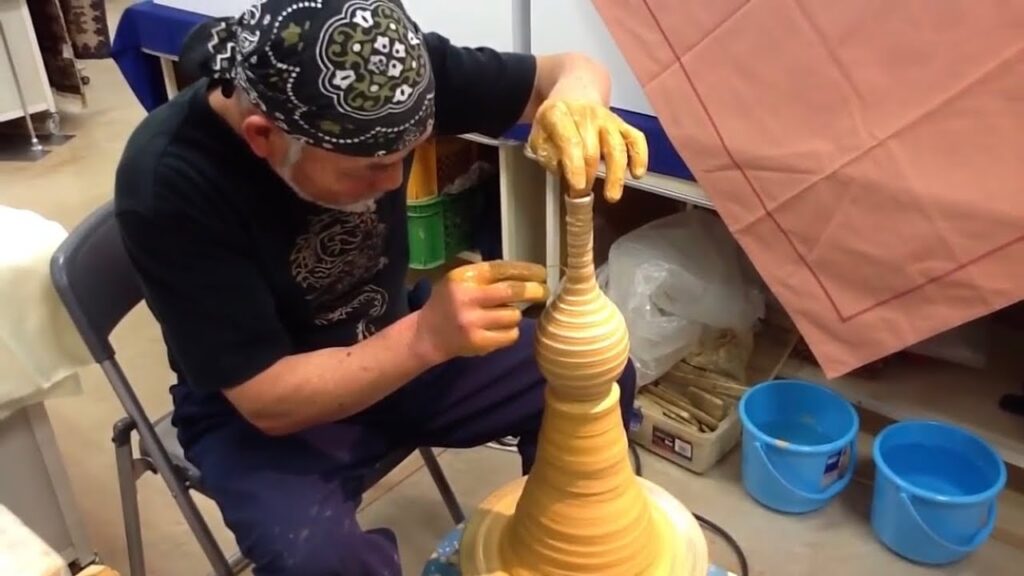Pottery and porcelain (陶磁器, tōjiki, also 焼きもの yakimono, or 陶芸 tōgei), is one of the oldest Japanese crafts and art forms, dating back to the Neolithic period. Kilns have produced earthenware, pottery, stoneware, glazed pottery, glazed stoneware, porcelain, and blue-and-white ware. Japan has an exceptionally long and successful history of ceramic production. Earthenwares were created as early as the Jōmon period (10,500–300 BC), giving Japan one of the oldest ceramic traditions in the world. Japan is further distinguished by the unusual esteem that ceramics holds within its artistic tradition, owing to the enduring popularity of the tea ceremony.
Japanese ceramic history records distinguished many potter names, and some were artist-potters, e.g. Hon'ami Kōetsu, Ogata Kenzan, and Aoki Mokubei. Japanese anagama kilns also have flourished through the ages, and their influence weighs with that of the potters. Another characteristically Japanese aspect of the art is the continuing popularity of unglazed high-fired stoneware even after porcelain became popular. Since the 4th century, Japanese ceramics have often been influenced by Chinese and Korean pottery. Japan transformed and translated the Chinese and Korean prototypes into a uniquely Japanese creation, and the result was distinctly Japanese in character. Since the mid-17th century when Japan started to industrialize, high-quality standard wares produced in factories became popular exports to Europe. In the 20th century, a modern ceramics industry (e.g., Noritake and Toto Ltd.) grew up.
Japanese pottery is distinguished by two polarised aesthetic traditions. On the one hand, there is a tradition of very simple and roughly finished pottery, mostly in earthenware and using a muted palette of earth colours. This relates to Zen Buddhism and many of the greatest masters were priests, especially in early periods. Many pieces are also related to the Japanese tea ceremony and embody the aesthetic principles of wabi-sabi ("austerity-rust/patina"). Most raku ware, where the final decoration is partly random, is in this tradition.The other tradition is of highly finished and brightly coloured factory wares, mostly in porcelain, with complex and balanced decoration, which develops Chinese porcelain styles in a distinct way. A third tradition, of simple but perfectly formed and glazed stonewares, also relates more closely to both Chinese and Korean traditions. In the 16th century, a number of styles of traditional utilitarian rustic wares then in production became admired for their simplicity, and their forms have often been kept in production to the present day for a collectors market.
Latest Uploads:
🌍Check my website / blog:
📸Add me on Instagram:
🐦Add me on Twitter:
📕Add me on Facebook:

